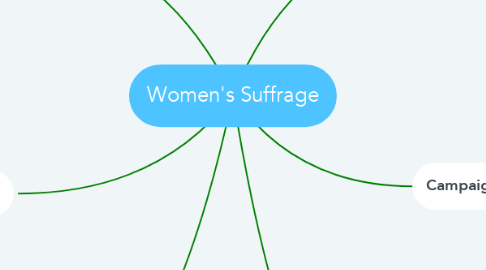Women's Suffrage
by Kayla Vega


1. Success and Consequences to Campaigning
1.1. Because of the courageousness of the supporters who campaigned, their actions were very attention drawing, and caught the eye of many congressmen and politicians
1.2. The actions of the campaign were consequential because there would be legal disciplining involved if petitions became too out of hand, people would began to be arrested by the police
1.3. The women pursued campaigning and continued for the greater good of the women in the society
2. Anti-Suffragists
2.1. There were always people who did not support women's suffrage, but it was not until 1911 when an official group was organized around it, the Massachusetts Association Opposed to the Further Extension of Suffrage to Women
2.2. The anti suffragists would campaign more subtly, but aggressively, regardless
2.3. The effort of the opposing party was ineffectual because the women ended up gaining more support and achieved the passing of an amendment in their favor
3. Challenges
3.1. The 14th Amendment was not a help to the goals of the suffrage movement because this was the amendment that granted men, only, the right to vote, and completely secluded women
3.2. The 15th Amendment was similar to the 14th, however, the terms were more narrow and specified because with the passing of this amendment, women were, once again, ignored, and men of color were now also allowed to vote
3.3. The Movement began to die down because there was no government action being take in support of the movement, and it wasn't until WW1 when the movement was rejuvanated
4. Main Influencers of the movement
4.1. Susan B. Anthony
4.1.1. NAWSA's second president, and close friends with Elizabeth Cady Stanton
4.2. Elizabeth Cady Stanton
4.2.1. founder of the NAWSA, lived in Rochester New York, was dedicated to the movement
4.3. Lucy Stone
4.4. Ida B. Wells
4.4.1. used her publicity and advantages as a journalist to support and advertise the movement

